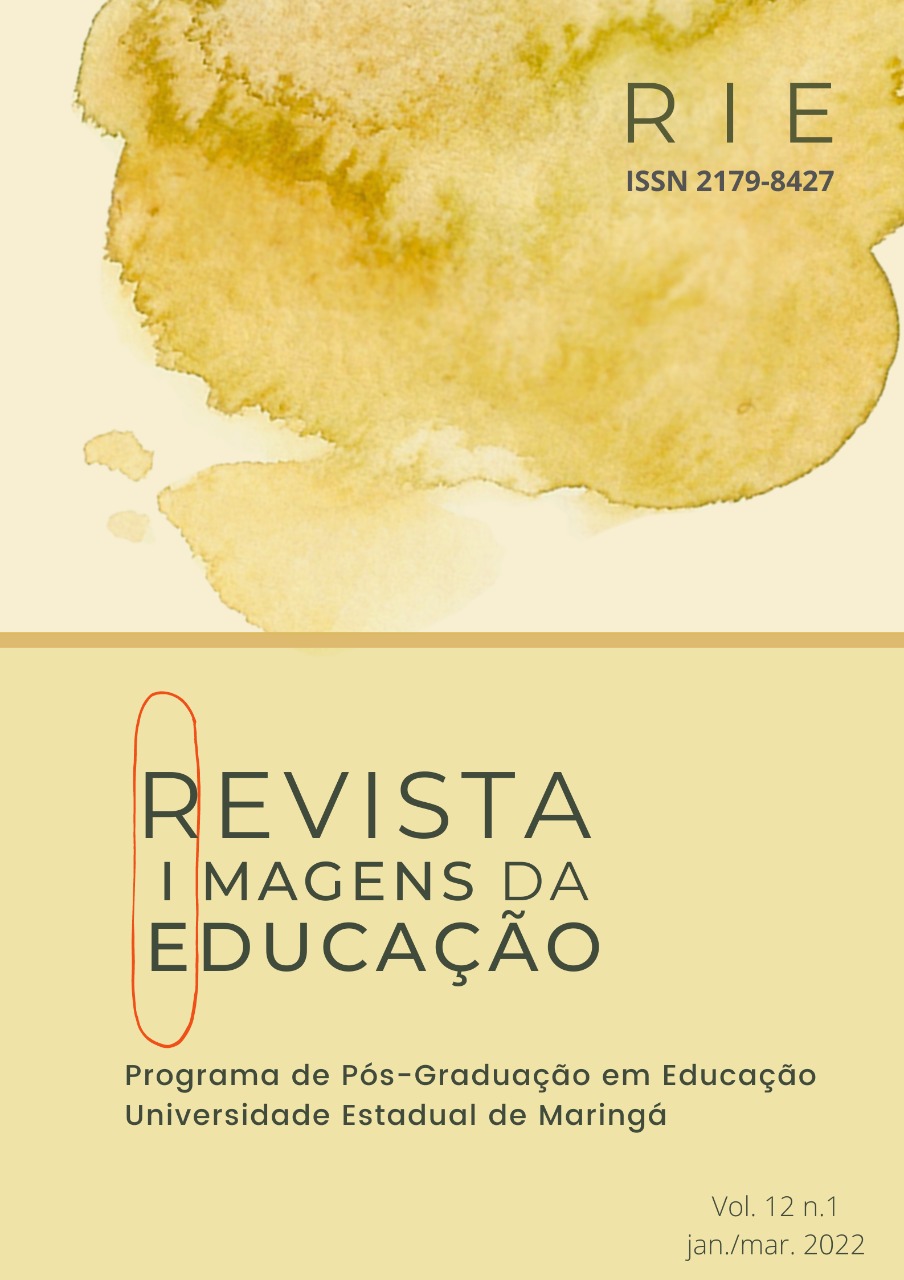PERCEPÇÕES DE EDUCADORAS SOBRE O BRINCAR ARRISCADO NA EDUCAÇÃO INFANTIL
Résumé
Cet article présente les résultats d'une recherche dont l'objectif général était d'étudier les perceptions qu'ont les éducateurs de la petite enfance du réseau municipal d'éducation de Santo André à propos du jeu à risque. Une partie de la compréhension que le jeu à risque est important pour le développement des enfants car il leur permet une autonomie graduelle dans la prise de décision basée sur la gestion des risques. Il s'agit d'une recherche qualitative qui a eu l'entrevue semi-structurée comme procédure de collecte de données. avec les enseignants. La base théorique se concentre sur les études et recherches de Tizuko Morchida Kishimoto, Gilles Brougère, Tim Gill, Maria Gabriela Portugal Bento et Illeana Wenetz. L'analyse des données a révélé que les jeux font partie de la vie quotidienne des institutions, cependant, ils sont, dans la grande majorité, contrôlés et utilisés pour enseigner quelque chose préalablement défini, qui dénote une perspective scolaire. Concernant les jeux à risque, leur absence est constatée, soit par manque de connaissances sur le thème, soit par crainte des éducateurs d'être tenus pour responsables si l'enfant se blesse, réaffirmant ainsi la culture de la peur en vigueur dans la société. Les données démontrent également une préoccupation légitime des enseignants avec des enfants qui génère une tension entre contrôle et protection, car, en défense des soins, elles finissent par empêcher des expériences dans lesquelles le risque peut être bénéfique pour le développement et l'apprentissage des enfants. . Il conclut avec la nécessité d'une formation des enseignants qui sensibilise les éducateurs au potentiel du jeu à risque dans le développement des enfants. Ainsi, l'importance de la formation des enseignants est soulignée afin de mieux qualifier leur pratique pédagogique.
Téléchargements
Références
BENTO, M. G. P. Arriscar ao brincar: análise das percepções de risco em relação ao brincar num grupo de educadoras de infância. Revista Brasileira de Educação. São Paulo. v.22 n. 69 p. 385-403. abr-jun.2017.
BENTO, M. G. P. O perigo da segurança: estudo das percepções de risco no brincar de um grupo de educadoras de infância. 2012. 73f. Dissertação de Mestrado - Faculdade de Psicologia e de Ciências da Educação – Universidade de Coimbra, Coimbra 2012.
BROUGÈRE, G. A criança e a cultura lúdica. In.: KISHIMOTO, T. M. (org.). O brincar e suas teorias. 4 ed. São Paulo: Cenage Learning. 2008.
BROUGÈRE, G. Brinquedo e Cultura. 5 ed. São Paulo: Cortez, 2004.
BROUGÈRE, G. O que é a brincadeira. Revista Criança. Brasília, MEC, n. 31, dez. 1999.
FREIRE, P. Pedagogia da autonomia: saberes necessários à prática educativa. 29. ed. São Paulo: Paz e Terra, 2009.
KISHIMOTO, T. M. Jogo, brinquedo, brincadeira e a educação. (Org.). São Paulo: Cortez, 2017.
NETO, C. Conversas observador: libertem as crianças. Disponível em: https://observador.pt/eventos/conversas-observador-libertem-as-criancas/ Acesso em: 03 abr. 2019.
SANDSETER, E. B. Early childhood education and care practitioners' perceptions of children's risky play: examining the influence of personality and gender, 2010.
SANTO ANDRÉ. Anuário de santo André 2016 (ano base 2015). Prefeitura Municipal de Santo André. São Paulo, 2016.
SANTO ANDRÉ. Câmara Municipal de Santo André. Lei n. 6833. Dispõe sobre a organização administrativa do magistério municipal, Santo André, 1991. Disponível em: https://cm-santo-andre.jusbrasil.com.br/legislacao/699661/lei-6833-91. Acesso em: 15 jan. 2019.
SILVA, M. R. P. da. Essa ciranda não é minha só, é de todos nós: o brincar e as culturas infantis. Guia do estudante do curso de Pedagogia EAD. São Bernardo do Campo: Universidade Metodista de São Paulo, 2017.
SILVA, M. R. P. da. Essa ciranda não é minha só, é de todos nós: o brincar e as culturas infantis. Guia do estudante do curso de Pedagogia EAD. São Bernardo do Campo: Universidade Metodista de São Paulo, 2017.
TIRIBA, L. Educação Infantil como direito e alegria: em busca de pedagogias ecológicas, populares e libertárias. Rio de Janeiro/São Paulo: Paz e Terra, 2018.
WENETZ, I. As crianças ausentes em ruas e nas praças: etnografia dos espaços vazios. Revista de Ciências Sociais. Rio Grane do Sul. v.13, n.2, p.346-363. maio/ago., 2013.
Copyright (c) 2022 Imagens da Educação

Ce travail est disponible sous licence Creative Commons Attribution - Pas d'Utilisation Commerciale - Pas de Modification 4.0 International.
Declaro que o presente artigo é original, não tendo sido submetido à publicação em qualquer outro periódico nacional ou internacional, quer seja em parte ou em sua totalidade. Declaro, ainda, que uma vez publicado na revista Imagens da Educação,ele não será submetido por mim ou pelos demais co-autores a outro periódico. Por meio deste instrumento, em meu nome e dos co-autores, cedo os direitos autorais do referido artigo à Revista e declaro estar ciente de que a não observância deste compromisso submeterá o infrator a sanções e penas previstas na Lei de Proteção de Direitos Autorias (Nº 9609, de 19/02/98).















1.png)

